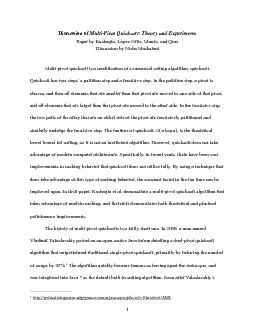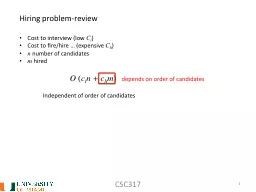PPT-Outline In this topic we will look at quicksort: The idea behind the algorithm
Author : trish-goza | Published Date : 2019-11-01
Outline In this topic we will look at quicksort The idea behind the algorithm The run time and worstcase scenario Strategy for avoiding the worstcase medianofthree
Presentation Embed Code
Download Presentation
Download Presentation The PPT/PDF document "Outline In this topic we will look at q..." is the property of its rightful owner. Permission is granted to download and print the materials on this website for personal, non-commercial use only, and to display it on your personal computer provided you do not modify the materials and that you retain all copyright notices contained in the materials. By downloading content from our website, you accept the terms of this agreement.
Outline In this topic we will look at quicksort: The idea behind the algorithm: Transcript
Download Rules Of Document
"Outline In this topic we will look at quicksort: The idea behind the algorithm"The content belongs to its owner. You may download and print it for personal use, without modification, and keep all copyright notices. By downloading, you agree to these terms.
Related Documents














